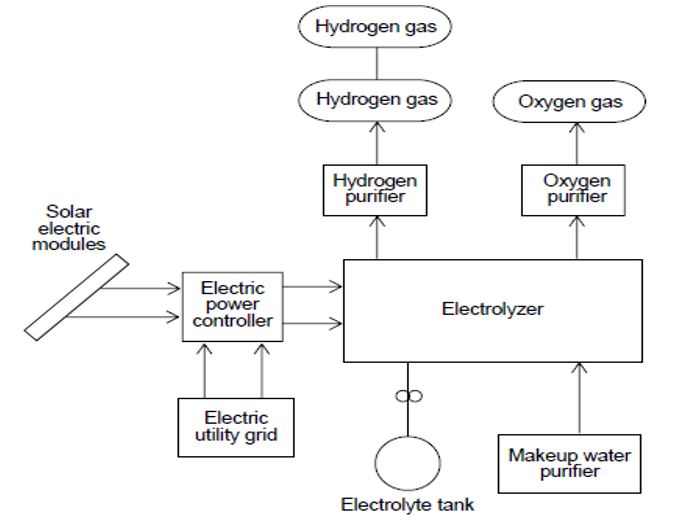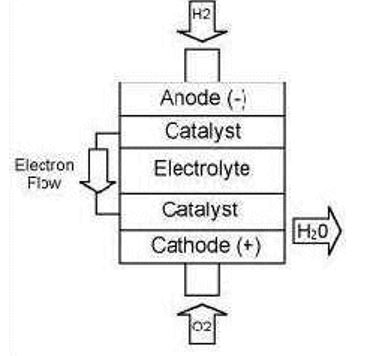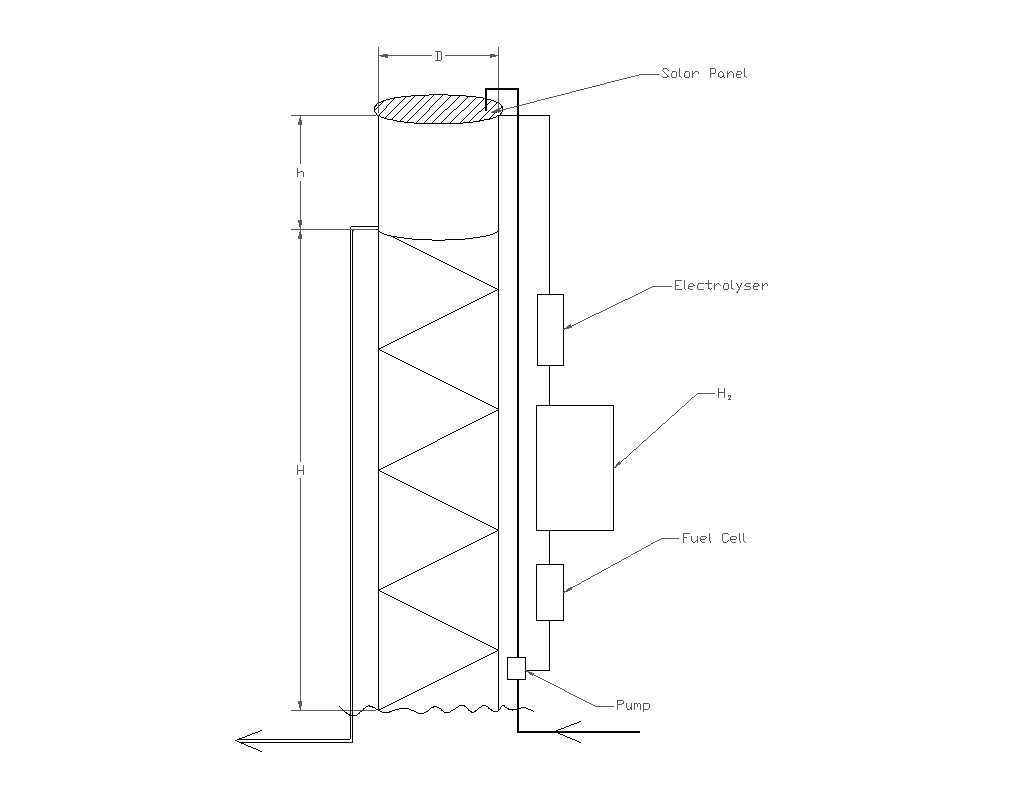Introduction
Energy is critical to worldwide operations. Each year, lots of funds are invested in energy related research, as fear of depletion of world’s energy resources grow. Fuel cells are increasingly being considered as the possible solution to the continuously increasing energy problems globally (Science Applications International Corporation 12).
Like other applications used globally, pumps consume a lot of fuel and alternative sources of power to hydroelectricity are increasingly being sought for this application. Not only are these alternatives being sought due to energy scarcity but also due to the increasing need to produce environmentally friendly energy production units. Fuel cells are emerging as the ideal solutions that fit these requirements. Coupled with other environmentally friendly energy production techniques like biofuels and renewable energy sources like hydrogen gas, they can produce electricity which is free of pollution effects (Science Applications International Corporation 12).
Fuel cells use hydrogen gas and oxygen to produce energy with water as the only biproduct. The resulting power can be effectively used to power pumps. While oxygen gas is readily available, solar power can be used to generate hydrogen gas via an electrolyzer. This paper describes the increased use of hydrogen as a source of renewable energy, the working of a fuel cell, how the system interacts with its internal components and the environment and the working of the system to generate energy for use in water pumping.
Hydrogen as a renewable energy source
Hydrogen gas burns to produces little or insignificant amount of harmful gas emissions. Recent research indicates that hydrogen energy content per unit weight is the largest compared to any other fuel. Additionally, it is a leading environmentally friendly energy source (Science Applications International Corporation 12).
Despite being the simplest element, hydrogen does not occur naturally and hence must be produced. Often it exists in combination to other elements. When burnt in engines, hydrogen results into no emissions and when used in fuel cells, its only biproduct is water which is non-toxic. However, it is found in many organic compounds mostly hydrocarbons which coincidentally, largely make up world fuels including gasoline, natural gas and methane among others (Slater 34).
Often various processes are used in production of hydrogen including reforming from hydrocarbons, and electrolysis, where an electric current is used to extract hydrogen from water. Some bacteria have also been noted to use sunlight to produce hydrogen under specific conditions. Hydrogen fuel cells have for a long time been used to power electrical system of shuttles.
When produced using renewable energy sources like solar energy and wind energy, hydrogen can be used as a renewable energy source (Slater 34). The diagram attached below illustrates the process of produces hydrogen via electrolysis using solar power.

Fuel Cells
Hydrogen and oxygen are combined to produce power in fuel cells. Fuel cells combine hydrogen and oxygen gases to produce energy. Often, they are compared to batteries as both convert chemically produced energy into electric energy that can be used just like any other forms of electricity (Science Applications International Corporation 35).
Fuel cells do not however lose their charge as batteries do for as long as they receive fuel supply (hydrogen). This technology is increasingly being considered as a promising electricity source in future. Fuels cells operate maximally when supplied with pure hydrogen. While other forms of renewable energy like sun and wind are unable to produce continuous energy, they can be useful in production of electric energy and hydrogen which are stored for continuous production of energy via fuel cells (Slater 34).
Working of a fuel cell
Like batteries, fuel cells generate electricity without any rotary motions or combustion being involved. They utilize electrochemical reaction in production of electricity. The electrochemical reaction brings together hydrogen ions and oxygen atoms together.
Unlike batteries, they rely of external fuel sources (hydrogen) to continuously produce power (Science Applications International Corporation 39). They utilize two electrodes, an anode and a cathode to form a complete and operational cell. The electrodes are sandwiched around specific electrolytes. A catalyst is also availed to ensure accelerated electrochemical reaction. The figure attached illustrates the working technique of a fuel electrode.

Hydrogen ions and oxygen atoms are continuously supplied into the cells resulting into chemical reactions and hence flow of electrons. The flow electrons represent the electricity generated. Water is released as a biproduct. As hydrogen ions pass through the electrolyte and interact with oxygen atoms (phosphoric acid), an induced current develops in the fuel cell. The current produced is often proportional to the electrodes cross-sectional area as will be later illustrated in power calculation. The voltage per electrode pair is often limited to 1.23V and hence cells are often stacked to acquire the desired power output (Slater 34).
Fuel Cell’s Chemistry
The fuel cells basically operating by injection of H2 molecules into the cell’s anode. A catalyst usually a thin powdered platinum coat engages the hydrogen molecules breaking it into a proton and an electron. Noting that electrolytes only accept protons, the proton goes into the electrolyte while the electron is fed across the circuit. The electrons return to the cell via the cathode on completing work.
At that instance, the catalyst assists the oxygen molecules, the proton and the electron to combine and form water (Slater 34). The chemical reactions involved are summarized below:
Part reactions
Partial Reaction at the anode:
2H2 => 4H+ + 4e–
Partial Reaction at the cathode:
O2 + 4H+ + 4e– => 2H2O
Complete cell reaction is as shown below:
2H2 + O2 => 2H2O
As mentioned earlier, the reaction produces limited voltage more so considering the effect of resistance and hence the need for stacking together of cells to produce plenty of current. Stacking multiplies the voltage to stable levels.
The Overall Reaction
The overall chemical reaction of fuel cells can be derived from the reactions at each individual electrode. It is obtained by bringing together of the two half reactions. This is best illustrated by the equation derivations reflected below:
Step 1: Putting Both Sides Together

Step 2: Cancellation of Common Things on Both Sides

Step 3: Presentation of What Is Left Over
2H2 + O2 = 2H2O
Experimental procedure
An experiment was set up to determine the following:
- Current generated by solar cells
- Determination of hydrogen production using the solar panel & electrolyzer unit
- Determination of hydrogen consumption by the fuel cell
The experimental set-up is as shown in the diagram below.

A solar panel was set at the top of the tank to generate the power necessary to produce oxygen at the electrolyzer. The solar panel was the connected directly to the electrolyzer. The electrolyzer was connected to a hydrogen collection chamber from hydrogen was directed into the fuel cell. The fuel was connected to the pump which was then used to pump water.
Experimental procedure 1
The first experimental procedure set out to identify how changes in loading characteristics (resistance) affected the amount of hydrogen consumed, the time taken to consume it and the resulting current produced. The obtained results are as displayed in experiment results.
Experimental procedure 2
The second procedure set out to identify how the amount of hydrogen availed affected current produce and the time taken. In this experiment voltage was kept constant. The obtained values are as indicated in experiment no. 2 values.
Experimental procedure 3
Experiment investigated how the angle of electrodes affected the current produced by the fuel cells. The fuel cell electrodes were set at varying angles and the resulting current values recoded for individual angles.
Table 1. Experiments data.
Calculations
The calculations used in coming up with the output values in excel are based on General Electric calculations shown below.
Formula 1: Electrical (electric) power equation, P = I × V = R × I2 = V2 ⁄ R, where, P represents power in Watts, V represent voltage in volts, I represent current in amperes.
Power is obtained with the help of the mechanical power equation, P=E/t = W/t where P represents power in watts and E represents the energy required in joules while time in seconds is given by t.
Power, on the other hand, is given by the product of force and displacement over a specified time. Mathematically this is represented as shown by the equation below:
Where P = F × s/t or P = F × v( Power = force × speed (velocity))
On other hand, the electrical energy is given by the equation below:
E = P × t measured in watt-hours’ (kWh).
Design specifications
The designs specifications for the water pumping systems are as illustrated in the table below and take consideration of various factors which may affect the systems performance.
Conclusion
It is important to note that one fuel cell produces very little electricity and therefore stacking is a necessity. This would facilitate generation of usage electricity and is achieved by arranging the cells into cell batteries. However, often they are not referred to as batteries to avoid confusion and hence the name fuel cells. At the last part of the electrochemical equation, it is clearly reflected that the fuel cell working is a simple as burning of hydrogen gas in the presence of air (oxygen). The key difference only arises from the fact that in the case of fuel cell, the electrons are harnessed rather than just performing combustion.
The use of fuel cells to tap energy is unequivocal. The technology not only improves global energy production but comes with several advantages. Most importantly is its environmental acceptability. The technology does not emit any toxic substances and hence s safe to the environment. Its fuel source, hydrogen can also be obtained from a few sources making it easy to obtain.
References
Science Applications International Corporation. Fuel Cell Handbook (5th Edition). Morgantown, West Virginia: National Energy Technology Laboratory. 2000.
Slater, Alan. Simple, Safe Fuel Cell, Chem. 13 News, 1999, page 34.